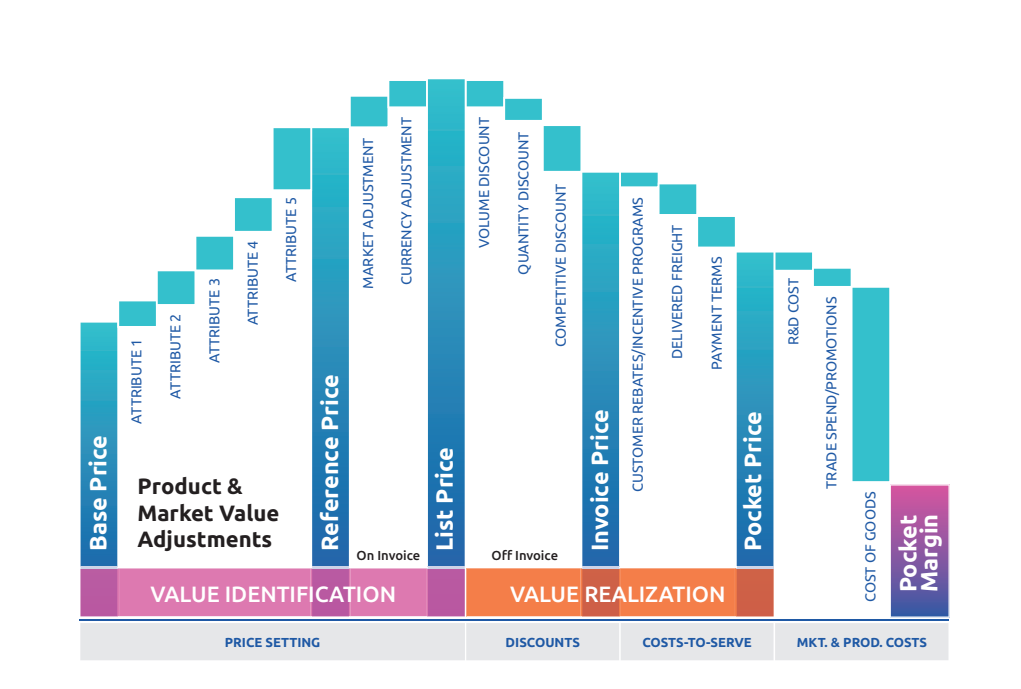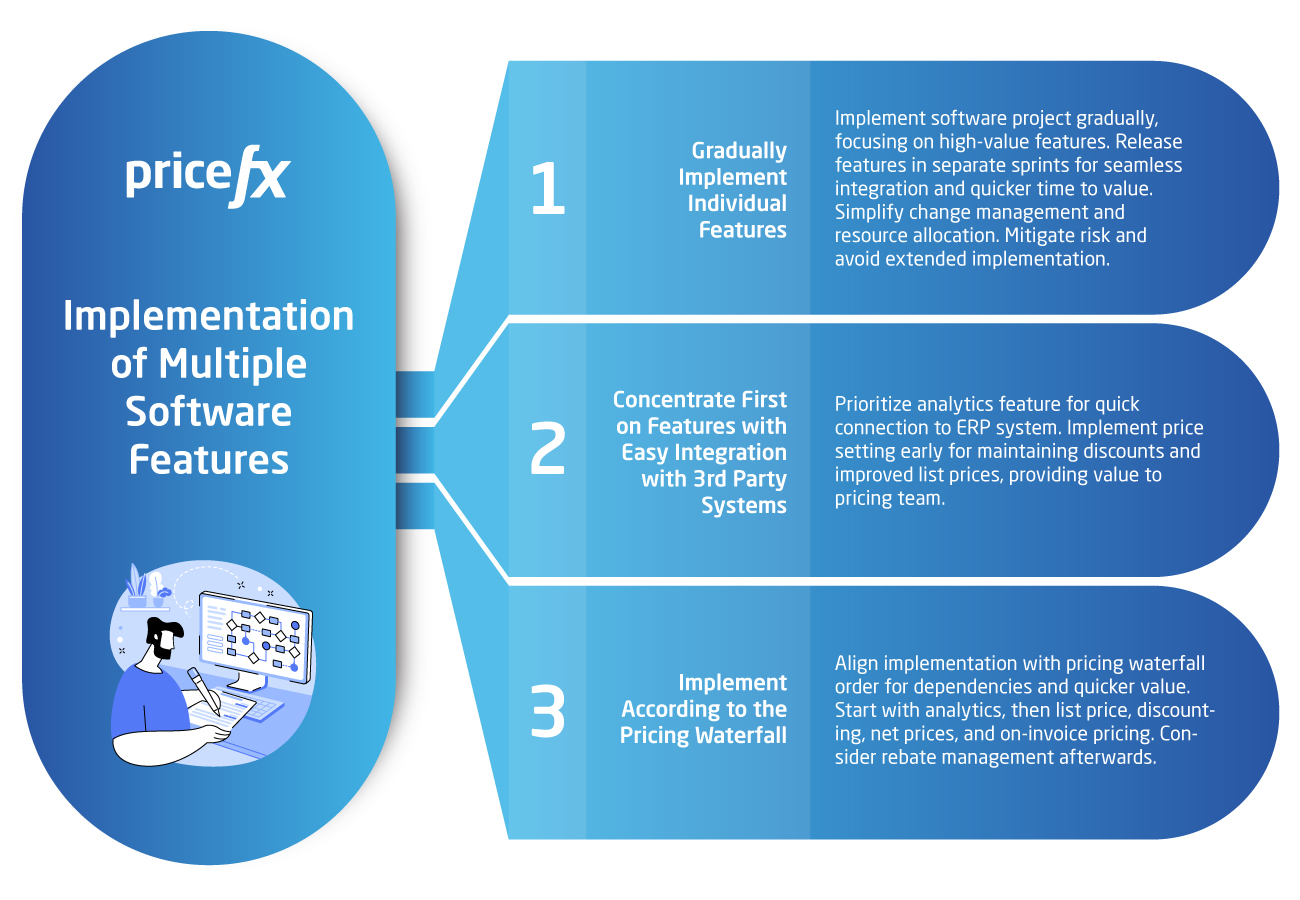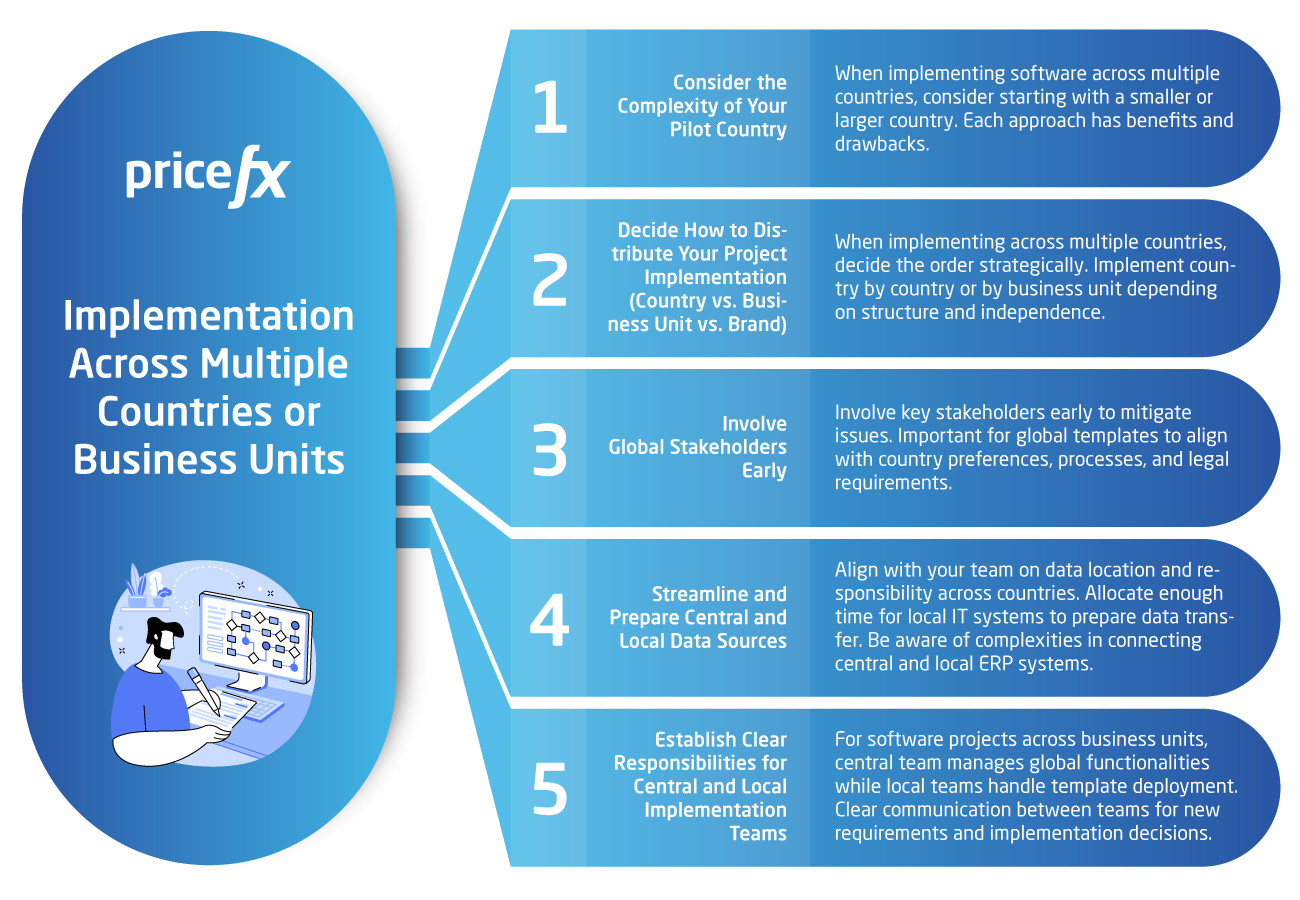Software Implementation: Strategies for Complex Projects
June 22nd, 2023 | 7 min. read
When juggling a multi-phase pricing software implementation where several modules, countries, and business units come together, it’s easy to drop the ball. Without the right strategies in place to manage complex projects, your project is at risk of languishing in implementation, significantly delaying time to value. Considering pricing software can be a significant upfront investment, it’s only fair that your business benefits from the solution as quickly as possible.
At Pricefx, with over 10 years’ experience supporting businesses like yours optimize their pricing infrastructure with our cloud-native pricing software, we know things can go wrong when managing large-scale software projects. And as IT projects have become increasingly complex, they often do. Luckily, there are a few methods you can have in your back pocket to mitigate risk and support successful outcomes.
To help ensure your business sees its software investment pay off when it needs to, we’ve created a handy guide of strategies to keep in mind when preparing for complex software project implementation, including best practices for implementations spanning several functionalities, countries, or business units.
Best Practices for Implementing Multiple Pricing Software Features
If you plan to take advantage of the multiple features a pricing software solution has to offer (e.g., price setting, rebates, price optimization, and so on), here are the best practices for implementation to support quicker time to value.
1. Gradually Implement Individual Features
We recommend implementing your software project gradually by bringing individual features to business go-live in separate sprints (as opposed to releasing them simultaneously in one Big Bang) to have a smaller and more manageable project scope for your team to focus on at once.
The key here is to focus first on the features that bring the most value to your organization and can still be implemented quickly. In practice, this would mean bringing a single feature to business go-live in the first sprint before moving on to other features in the following sprints.
A staggered approach to implementation also ensures each feature integrates seamlessly into your existing IT infrastructure, enables easier data delivery, mitigates risk, and guarantees quicker time to value for tasks that are most pertinent to a company’s immediate pricing needs.
In short, breaking down a complex software project into smaller feature-focused sprints to business go-live simplifies your company’s change management and resource allocation by allowing them to concentrate their efforts on a single phase at a time, mitigating the risk of an extended implementation.
2. Concentrate First on Features with Easy Integration with 3rd Party Systems
It’s a good idea to focus first on features that can be connected quickly to your ERP system. For this reason, the analytics feature is a great place to start. As only inbound interfacing (i.e., uploading data from legacy systems, such as sales transaction data) is required for its implementation, analytics is a low-hanging fruit with a quick time-to-value.
We also advise getting price setting or list prices features set up early on, as this approach allows your business to maintain its current discounts and net prices while benefiting from improved list prices. This step alone can already bring considerable value to your pricing team in a short period of time.
3. Implement According to the Pricing Waterfall
Along similar lines, we recommend aligning your implementation with the order that features appear on the pricing waterfall.

We suggest doing this for two reasons: first, because there are dependencies between features that require certain ones to run first, for example list price is a required input in later modules, and second, the features towards the beginning of the pricing waterfall are typically easier to implement, so your company will see value from the solution quicker.
Although analytics can be introduced at any stage of the project as it runs independently, as mentioned we recommend implementing this one first.
Next, following the pricing waterfall, we recommend concentrating on list price setting, then moving on to all types of discounting, following with net prices (including quoting), building up capabilities to eventually arrive at the final invoice price. Once you’ve successfully implemented on-invoice pricing, you might then consider looking at rebate management.

Best Practices for Software Implementation Across Multiple Countries or Business Units
Before diving into a software implementation project with multiple countries or business units, consider each of these best practices to ensure maximum efficiency and speed of realization.
1. Consider the Complexity of Your Pilot Country
One of the most first questions you should ask yourself in a software implementation project spanning multiple countries is whether to start with a smaller country or a larger, more complex country. As there are benefits and drawbacks to each approach, your business should carefully consider their implications.
If your business invests more time and resources at the onset into implementing the solution in a more complex country, the same template is likely going to be applied to smaller countries, which simplifies the rollout in the long run. On the other hand, starting with a smaller country allows for quicker implementation, learning from the experience with minimal risk involved, and applying those lessons to subsequent countries, potentially resulting in a better final product.
2. Decide How to Distribute Your Project Implementation (Country vs. Business Unit vs. Brand)
When a combination of countries, business units, and brands are part of your implementation plan, you’ll also need to decide the order of implementation strategically.
Implementing country by country, which usually involves focusing on a strategic country first and proceeding to other countries without overlap, tends to be the most common approach as most businesses are structured this way. Another option is to implement by business unit, which is a better option when countries have several business units that function independently.
3. Involve Global Stakeholders Early
In order to mitigate implementation issues later on, it’s a good idea to involve key country and business unit stakeholders (including end users) as early as possible in the project.
This is especially vital when creating global templates, as it ensures the framework aligns with specific countries’ preferences and takes into account country-specific processes and legal requirements. While this doesn’t mean calling on each and every representative to weigh in, pulling in those from the largest organizations is a good starting point.
4. Streamline and Prepare Central and Local Data Sources
Data extraction can get complicated once your software rollout spans several countries, so you’ll need to align with your team in advance on where the data resides and who is responsible for its delivery at the local level. While your data will be partly sourced by a central team, some data types such as market share data, competitive data, and sell out data will typically need to be sourced by local teams.
It’s also essential to allocate adequate time for local IT systems to prepare the data for a seamless transfer. Complexities might arise when connecting the central ERP team and local ERP systems that require changes to their respective systems. The time required for this process is often underestimated, especially when multiple ERP systems of different brands are involved; it’s not uncommon to have several organizations in a single country, each utilizing a handful of different ERP systems.
5. Establish Clear Responsibilities for Central and Local Implementation Teams
When implementing software projects that involve multiple business units, it’s advisable to have a central team overseeing global functionalities while local rollout teams handle the software template deployment across countries and business units.
The central team would be tasked with developing a strong template and process control while the rollout teams can focus on mapping the local processes to the global template. If new requirements come up at the local level, rollout teams can communicate them to the central team, who will then decide if and how they’ll be implemented.

Why Software Implementations Fail – And How You Can Avoid It
In this article, we’ve outlined some key strategies your network can use to navigate multi-phase software project implementation that ensure more efficiency and a faster return on investment.
Complexity in software implementation can be a breeding ground for delays and errors. Without the right preparation, your go-live date could be set later than your business can afford. Consider checking out our article below about when software projects fail to find out what your business can do instead to mitigate those risks:
